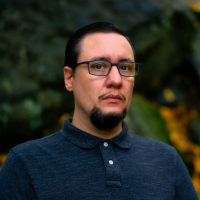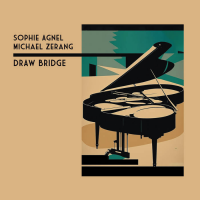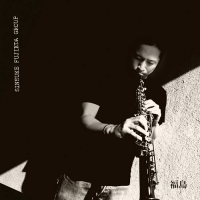Home » Jazz Articles » Extended Analysis » zBug: zBug: Splitting Glass / Twilight Sunrise
zBug: zBug: Splitting Glass / Twilight Sunrise
Leikam defines zBug's mission statement as follows: "To present structured improvisational sets based on architectural spaces and compositional themes/vocabulary to envelop audiences and enlighten their consciousness." He further stresses the positivity of this enlightenment process, for while zBug might on the surface seem like nothing more than an instrumental noise outfit, beneath that surface thrums a heart without a single fibrillation of aggression. Rather, zBug's thick descriptions are a means of understanding the feeling of each moment as it passes, expands, and exhausts itself toward rupture. The watchword here is "architecture," as the musicians seem to map through absorption every molecule of whatever space they inhabit. The album's titular first half took place, for instance, at the underground scene of San Francisco's Godwaffle Noise Pancakes, to which Leikam attributes "an edgier feel and explosive multimedia production channeled through the zBug filter." The result is more of a cause: a visceral shaping of atmosphere that goes straight for the chest. You may delude itself into thinking there is a limit while listening to it, but the heat of self-awareness tells you otherwise as all forward motions become reverse ones until the cycle completes itself in breaking point after breaking point. Leikam unleashes a veritable river of sound, flushing waves of information into the ocean of Bosco's cracking hits and Malouf's near-overwhelming toxic blush. Pulses are detectable, but refract into increasingly fragmented versions of themselves. Nevertheless, a subcutaneous rhythm prevails. A supernal and unerring explosion of category, this is, and one ripe for the listening.
Says Leikam of his bandmates, "I trust them completely to be the right note in the right time of space with us as zBug," and surely we can feel just how intuitive that relationship is. The expanse of Leikam's palette is due in part to a certain sense of construction, which here finds him fitting a custom 1994 Ibanez SR 1300 electric bass body with strings made for cello. To this planet he joins the satellite of his Moog Rogue, an instrument that has been with him from the late 1980s, since which time he has developed a fully engaged style of playing it. "I actively tweak the knobs and sliders to the compositional frequency I need for that moment," notes Leikam. "This ties into my thinking that the analog synthesizer breaks you out of the Western idea that there are only 12 notes/tones, which is absolutely absurd. With the Moog, I am able to play with the timbres in between."
If "Splitting Glass" is a raging flambé, then "Twilight Sunrise" serves the moon on a plate in a balsamic sun reduction. Performed at the (mostly) visually oriented Meridian Gallery, Leikam says the band "channeled a more woody and introspective concert" that processed the presences of listeners and the physical environment in tandem. A more ambient analogue, it is the flipside of an un-flipped insect, its thorax but one segment of a larger anatomical order. The gentility of its caress may come as a surprise in the wake of the first track, but its dreaminess is not without darkness, overrun as it seems to be with lost souls just waiting to be heard.
Listening to Splitting Glass/Twilight Sunrise, one senses two different kinds of power. The first is explosive, extraterrestrial, and cosmic. The second is implosive and burrows into the innermost cells. If it feels like there is something of one in the other, this is because the musicians experienced it that way, too. And so, when these two massive pieces are followed by excerpts from both, we can be sure that what we are hearing is the afterimage of an afterimage, copied until its physiognomy is no longer detectable.
And what does the future hold in store for zBug?
"We are looking forward to performing at more concerts and festivals outside of the San Francisco Bay Area, in New York and Los Angeles specifically, then touring in Europe and Asia in 2016 to perform with other zBug featured guest members such as Ernst Bier on drums (Berlin, Germany), Joe Locke on vibes (New York, New York, USA), and Mark Spybey on electronics and voice (Northumberland, UK), among many others. Also, zBug is looking forward to releasing their double live album, 3 ± 1: A New Beginning."
We can be sure that, whatever is due next to hit the digital shelves, it will be live in more ways than one.
Tags
PREVIOUS / NEXT
Support All About Jazz
 All About Jazz has been a pillar of jazz since 1995, championing it as an art form and, more importantly, supporting the musicians who make it. Our enduring commitment has made "AAJ" one of the most culturally important websites of its kind, read by hundreds of thousands of fans, musicians and industry figures every month.
All About Jazz has been a pillar of jazz since 1995, championing it as an art form and, more importantly, supporting the musicians who make it. Our enduring commitment has made "AAJ" one of the most culturally important websites of its kind, read by hundreds of thousands of fans, musicians and industry figures every month.


















